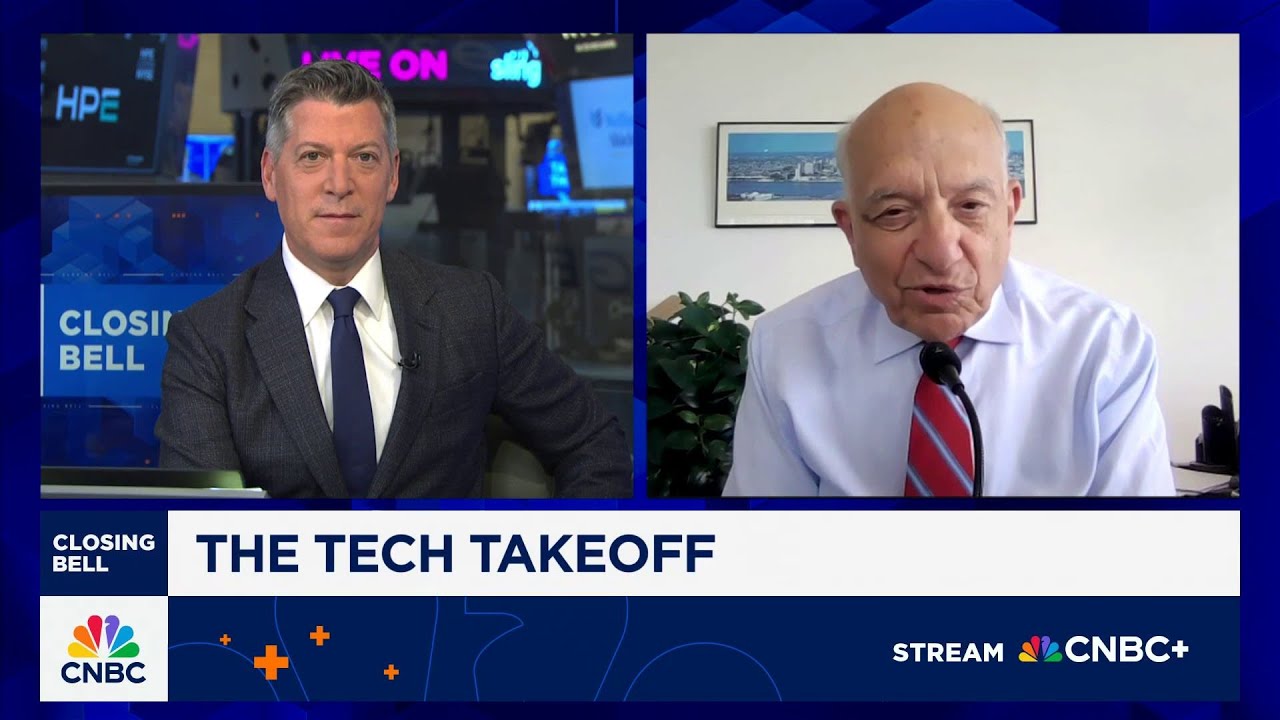Wharton professor Jeremy Siegel highlights AI, exemplified by Nvidia’s growth, as a key factor that could boost productivity and help offset inflationary pressures from tariffs, potentially sparking a new productivity boom. However, he also cautions about the challenges tariffs pose to corporate earnings and the labor market disruptions AI may cause, emphasizing the need to watch how companies adapt in the coming months.
In the discussion with Wharton School professor Jeremy Siegel, the focus is on the remarkable resilience and continued strength of the stock market, particularly driven by the technology sector and companies like Nvidia. Siegel emphasizes the difficulty of timing the market, noting that despite various challenges, the market has been buoyed by strong fundamentals and innovation. Nvidia’s valuation, reaching an impressive $4 trillion, is highlighted as a testament to the transformative impact of AI technology on the market.
Siegel points out that while AI producers like Nvidia are benefiting immensely, the real productivity gains will come when companies that adopt and implement AI technologies to reduce costs and improve efficiency start to see results. This adoption is seen as a necessary response to rising costs driven by tariffs. He suggests that AI could serve as a crucial tool to counteract the inflationary pressures caused by tariffs, potentially sparking a much-needed productivity boom similar to the one experienced during the COVID-19 pandemic with the adoption of remote work technologies like Zoom.
The conversation also touches on the impact of tariffs on the economy and corporate earnings. Siegel notes that while the second quarter earnings might remain strong due to pre-buying ahead of tariff implementations, the real effects of tariffs are expected to become more apparent in the second half of the year. He stresses the importance of upcoming corporate guidance to understand how companies plan to navigate these challenges. The market’s current desensitization to tariff threats is attributed to the expectation that many deals will be delayed or softened, but the underlying cost pressures from tariffs on materials like aluminum and steel remain significant.
Siegel acknowledges the potential downside of AI-driven productivity gains on the American workforce. While investors and companies may benefit from leaner operations and preserved profit margins, there is concern about job displacement and the evolving nature of work. He compares the AI revolution to the internet boom, suggesting that while some jobs may be lost or transformed, new opportunities and demands will continue to exist. The key challenge will be whether workers can adapt and increase their productivity to remain employable in an AI-enhanced economy.
Overall, the discussion highlights a complex interplay between technological innovation, market dynamics, and economic policy. AI is seen as both a powerful driver of growth and productivity and a potential disruptor to the labor market. Meanwhile, tariffs pose a tangible risk to cost structures and corporate profitability, making the coming months critical for assessing how companies and the broader economy will adjust. Siegel’s insights underscore the importance of monitoring corporate responses and market reactions as these forces unfold.
